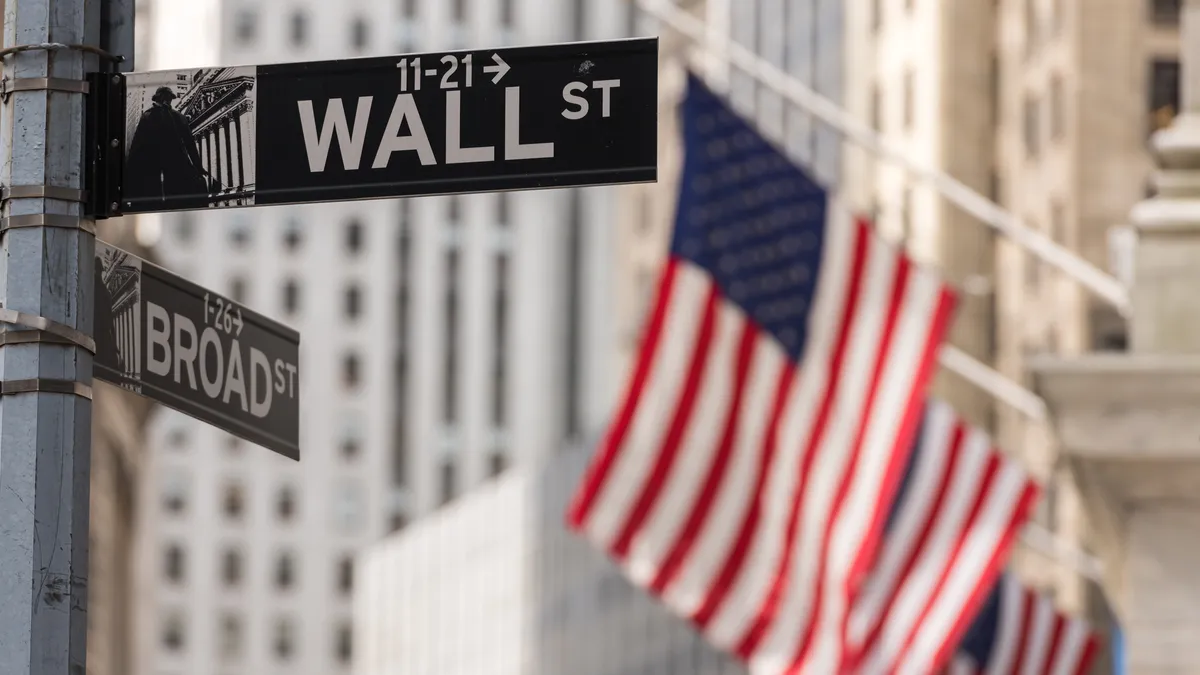Dive Brief:
- Two of the three main U.S. bond rating agencies posted middle-of-the-road evaluations of the higher education sector for the upcoming year. Moody's Investors Service issued a stable outlook and Fitch Ratings shared a neutral outlook in separate research last week.
- Revenue appears set to rise in part because campuses returned to in-person learning this fall, endowment returns were high and state budgets are strong, according to the agencies. Undercutting the benefits of revenue growth are inflation, enrollment pressures and tuition pricing constraints.
- Operating revenue for four-year institutions can be expected to rise between 4% and 6% across the sector, Moody's projected. But it predicts only a third of public universities and just half of private universities will generate earnings of more than 10% before interest, taxes, depreciation and amortization.
Dive Insight:
Ratings agencies generally have direct insight into a wealthier set of colleges and universities than the higher ed sector as a whole. But their outlooks consider a range of trends and competitive pressures affecting the overall higher ed market, making them worth watching even for leaders of colleges that don't plan to issue bonds soon.
Taken together, the two outlooks from Moody's and from Fitch show a higher ed sector buffeted by swirling headwinds and tailwinds.
Some campuses are set to enjoy revenue increases because they have been reopening in-person operations after sending students home to study early in the pandemic, Moody's said. That's driven net tuition increases and, notably, caused auxiliary revenue to rebound as dormitories, parking lots and athletic events refill.
At the same time, labor shortages and inflation are set to drive up spending and cut into institutions' operating margins, Moody's found.
Labor market shortages can hit colleges differently depending on institution type.
A tight labor market is driving many prospective community college students to choose better-paying jobs over education, Moody's found. Labor shortages could push up expenses at institutions that operate academic medical centers because they will likely have to turn to high-cost contract and travel nurses to fill staffing slots. The labor market can also be expected to cut into revenue growth at academic medical centers by leaving institutions without enough staffing to meet rising clinical demands.
Moody's acknowledged uncertainty around the duration and effect of high inflation and labor shortages. The longer inflation remains high, the more margins are likely to thin, it said.
Higher costs are arriving as federal coronavirus relief funding is expected to start tapering off. Fitch said the 2022 calendar year is likely to be the last with substantial support from federal coronavirus relief funding, despite the continuing risk from outbreaks.
Rising costs also come as institutions were starting to reinvest after making cuts in the 2021 fiscal year to balance budgets during the pandemic, Moody's said. Still, the ratings agency does not predict colleges will have much ability to pass higher prices on to students amid concerns about the cost of college and the value proposition of higher education.
Moody's expects median net tuition revenue to rise 2.9% in the 2022 fiscal year at private universities and increase 1% at public universities. Large, comprehensive universities have tended to perform better than other higher ed institutions, it said.
The ghost of 2020 won't fade quickly when it comes to enrollment. Smaller classes that started that year during the pandemic will hurt revenue downstream at many public and private institutions, Moody's said. A 22% decline in starting class sizes at community colleges over the last two years will flow forward. Lower community college enrollment hurts the transfer pipeline for four-year institutions as well, according to Fitch.
In a boost for colleges' tuition revenue prospects, Fitch predicted the market for international students will stabilize. International students are an important source of revenue for many colleges because they tend to pay higher tuition rates than their domestic counterparts.
At least one early indicator has signaled international enrollment rose moderately this fall after the number of international students at U.S. colleges fell 15% in the 2020-21 academic year, according to an annual report from the Institute of International Education and the U.S. Department of State.
The pandemic nonetheless continues to disrupt international students' ability to come to classes in the U.S., Fitch said. Global competition for this set of students is rising as well.
Modest increases in graduate enrollment could help colleges' student revenue, as graduate programs tend to discount tuition less than undergraduate programs do, even as they charge higher sticker prices, Fitch said.
Moody's identified inequality in access and affordability as key social risks the higher ed sector faces. Questions about college's value proposition will hurt demand for institutions without big brands, the ratings agency projected. Demands on financial aid will rise, squeezing budgets. Among students, "lower levels of academic preparation and wellness" stemming from the pandemic will make it more expensive for colleges to support the students they enroll.
Virtual learning and other increased reliance on technology have heightened the chances of ransomware attacks or data breaches. As a result, Cybersecurity risks to the sector and its financial condition are mounting, according to Moody's.














